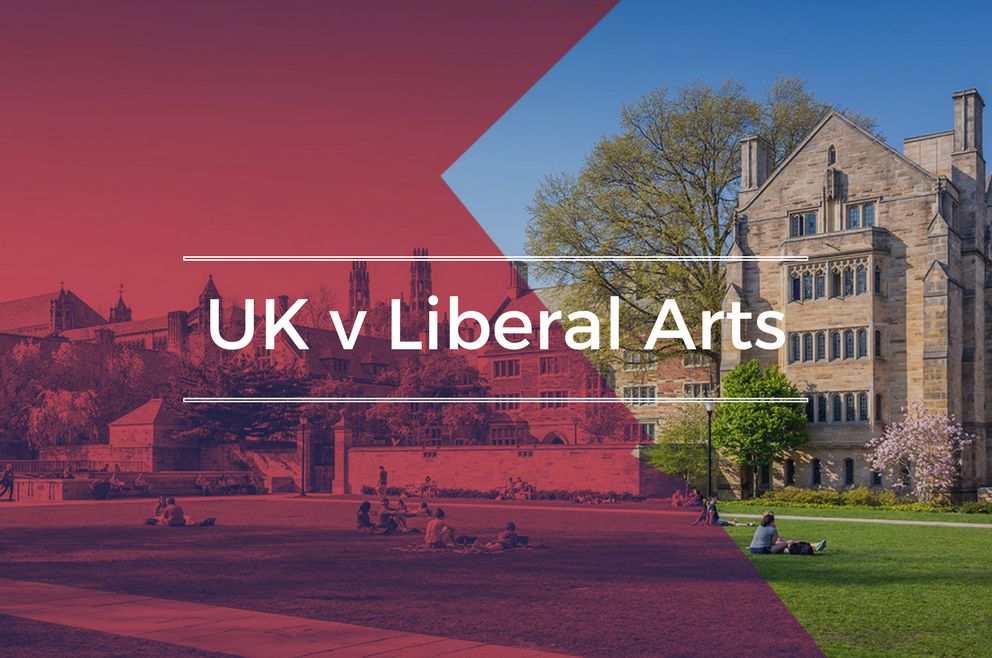Gap Year Gold: Using Gap Year To Boost Admissions
Read now/f/64062/4240x1513/5121b31a93/kor-gapyear-transfer-lp-header-1.png)
/f/64062/2500x1666/8b24e1624f/amherst.jpg)

For those growing up in Britain, Oxford and Cambridge are the obvious choices for an elite education. Their strengths are evident: small tutorials, world-class academics, and a close-knit community that yields lifelong relationships. For those looking further afield, major US universities such as Harvard, Yale or Princeton, renowned for sprawling campuses and world-leading research, have been the default options.
The US is, however, also home to an elite group of smaller, undergraduate-focused establishments known as liberal arts colleges. Little known in the UK, these are among the best higher education institutions in the world. They combine the most desirable facets of the top UK universities and the major US ones; the intimacy and personal touch of an Oxbridge College, with the flexible and wide-ranging courses of an Ivy League university.

The class size at these schools are fewer than 20 students on average, compared to 40 at Harvard, meaning greater visibility with professors, more relevant feedback, and greater scope for personal growth. Swarthmore College’s renowned Honors Program, for example, involves intensive weekly tutorials, typically with 5-8 students exploring a range of topics in-depth with a subject expert.
A less intimidating year group size – around 400-500, compared to the Ivy League undergraduate average of 1,800 and Russell Group average of 5400 – also creates a cohesiveness and esprit de corps which is often missing at larger universities. These institutions are known for the close bonds within their alumni networks, which often prove useful in finding and securing competitive internships and jobs.

Attending a smaller college does not mean any sacrifice in breadth of academic options. Whereas most British undergraduate degrees require a single subject focus for three to four years, liberal arts colleges encourage intellectual exploration in the first two years before deciding on a specialisation. A student graduating with a degree majoring in Neuroscience might have studied subjects as diverse as Japanese, American Literature, and Economic Theory.
At Williams College in Massachusetts, for example, January each year is dedicated to Winter Study, where students spend a month on self-improvement, whether through independent research, following a unique curriculum (from stained glass tiling to Venture Capital Law), or undertaking an internship.
Steve Jobs famously credited the broad, inclusive nature of liberal arts life as having a profound effect on his professional success. He would, for instance, never have included attractive typeface in the first Mac, a feature subsequently adopted by all computer manufacturers, had he not taken a calligraphy class as a Computer Science student at Reed College: “It was beautiful, historical, artistically subtle in a way that science can't capture, and I found it fascinating.”
The dedication to producing well-balanced, worldly individuals extends beyond academics. On average 50% of students spend at least one semester at a foreign university, enabling them to build international networks and develop language skills. Some institutions, such as Goucher College, even incorporate study abroad into every single course on offer.
Closer to home, in what is surely the only scheme of its kind, Oberlin students can rent pieces from its renowned Allen Memorial Art Museum for $5 a semester. Is that an original Rembrandt above your desk?
The significant private donations enjoyed by these colleges are shared across a much smaller number of students, resulting in exceptional facilities to support sporting, musical, and other extra-curricular activities. For example, the average endowment per enrolled student at Swarthmore College is around £935,000, compared to Oxford’s £225,000.

The liberal education boast an impressive array of alumni from their (relatively) small ranks. 20% of US Presidents count a liberal arts college as their alma mater; recent examples include Ronald Reagan and (perhaps less illustriously) Richard Nixon. Had Hillary Clinton won in November 2016 we would be talking about a current liberal arts commander in chief.
Perhaps unsurprisingly, there are plenty of household names from the arts too, ranging from author Jack Kerouac, to singer Bing Crosby, up to actors Meryl Streep and Harrison Ford.
There are also no shortage of Noble prize and Pulitzer prize winners, in subjects such as economics, poetry and journalism. In short, distinguished company to keep.
As we have already noted in the form of Steve Jobs, liberal arts colleges have a strong track record in producing renowned business people despite their ostensibly non-vocational courses. Indeed, the corporate landscape is awash with founders and chief executives who shunned big-name universities for the collegiate system.
American Express CEO Kenneth Chenault graduated with a BA in History from Bowdoin College while Adena Friedman, CEO of the Nasdaq stock-exchange, studied Political Science at Williams. The Walt Disney Company has an illustrious history of liberal arts leaders: current chairman and CEO Bob Iger (reportedly considering running for president in 2020) studied at Ithaca; his predecessor Michael Eisner completed his undergraduate at Denison; between them they worked on the deal to buy animation studio Pixar from…? Steve Jobs, of course.
Recognising their position as fosterers of entrepreneurial minds Middlebury boasts proportionately more founders and owners than even renowned business hotspots such as Berkeley or Cornell, liberal arts colleges offer enviable support and extra-curricular activities to encourage the Jobs of the future.
In one such scheme, Colorado College gives out $50,000 in seed money at its annual The Big Idea pitch competition. Similarly, Hampshire College, known for its open curriculum and lack of grade requirements, created a $1 million seed fund in 2013 that allocates $200,000 a year to growing enterprises – with the student body retaining complete control of the fund allocation.
Despite a foundation modelled on Oxbridge-style tutorials and grounded in classical European education, there are hardly any liberal arts colleges in the UK and indeed only a handful this side of the Atlantic.
The New College of the Humanities, founded in 2012 by philosopher A.C. Grayling, is broadly based on the American liberal arts model. It offers small classes, the ability to study majors and minors, and a liberal arts ‘diploma’ that encompasses areas such as applied ethics and science literacy. It is, however, unable to award its own degrees (their qualifications are validated by Southampton Solent or the University of London) and, based in Central London, lacks the intimate campus setting traditionally associated with most liberal arts colleges.
A number of British universities now offer undergraduate Liberal Arts courses (notably King’s and Bristol) but these are individual degree programmes amid major higher education institutions rather than the small, dedicated institutions.
To get an idea of the best liberal arts schools, rankings are available to help prospective students identify where to apply.
Here is the current top ten liberal arts colleges according to The Wall Street Journal and Times Educational Supplement. They have considered 15 individual performance indicators, including resources, contact time, academic reputation, and employability.
Of course, rankings are a start but can be notoriously unreliable and do not reflect your personal requirements and interests. Outgoing gregarious types might be more suited to a particular college than others – facts you cannot garner from statistics.
The US college application process requires significant forward planning, informed strategic choices, and preparation, but with such a wealth of opportunity on offer, students cannot afford to ignore a liberal arts education’s lifetime of benefits.